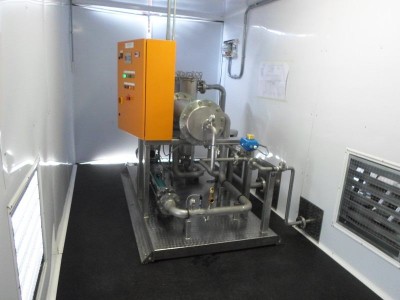NON-DESTRUCTIVE TESTING (NDT) CONSULTING
Non-Destructive Testing (NDT) Consulting can be provided in order to assist clients with the selection of the correct NDT type and the extent required, according to minimum code requirements.
1) Magnetic Particle Examination (MT)
Dry or wet fluorescent magnetic particle examinations are performed on ferromagnetic materials to detect surface and slight subsurface discontinuities such as cracks, seams, laps, voids, or flaws.
| ADVANTAGES | LIMITATIONS |
| Low Cost | Surface Test Only |
| Easy and Effective | Object must be clean |
| Relatively Quick | Ferro – Magnetic Material Only |
2) Liquid Penetrant Testing (PT)
Various types of liquid penetrant testing methods are utilized to detect material defects open to the surface or to detect open surface cracks. Red dye or fluorescent penetrants are utilized as well as various types of wet and dry developers. Fluorescent dye penetrant examinations are performed under black light conditions to ensure the highest detectability for very fine fatigue crack
| ADVANTAGES | LIMITATIONS |
| Low Cost | Surface Test Only |
| Easy and Effective | Object must be clean |
| Relatively Quick | Non-porous material only |
3) Radiographic Testing (RT)
Radiographic testing is utilized for the detection of internal defects in castings, welds or forgings by exposure to x-ray or gamma ray radiation. Defects are detected by differences in radiation absorption in the material as seen on a shadow graph displayed on photographic film or a fluorescent screen.
| ADVANTAGES | LIMITATIONS |
| Volumetric Test | Safety!! |
| Permanent Visual Image | Time Consuming |
| Relatively Expensive | |
| Planar Flaws Often Missed |
4) Ultrasonic Testing (UT)
In ultrasonic testing (UT), very short ultrasonic pulse-waves with centre frequencies ranging from 0.1-15 MHz and occasionally up to 50 MHz are launched into materials to detect internal flaws or to characterize materials. The technique is also commonly used to determine the thickness of the test object, for example, to monitor pipework corrosion.
| ADVANTAGES | LIMITATIONS |
| Volumetric Test | Can Be Time Consuming |
| No Safety Limitation | No Permanent Image |
| One Side Access |





